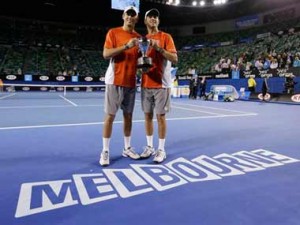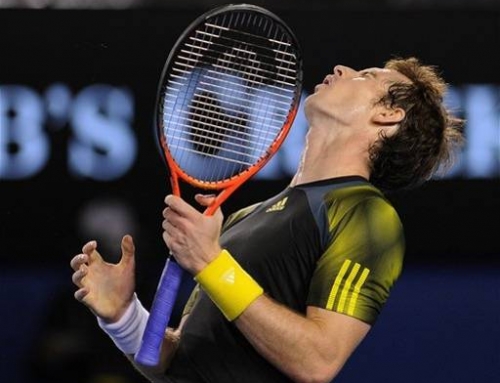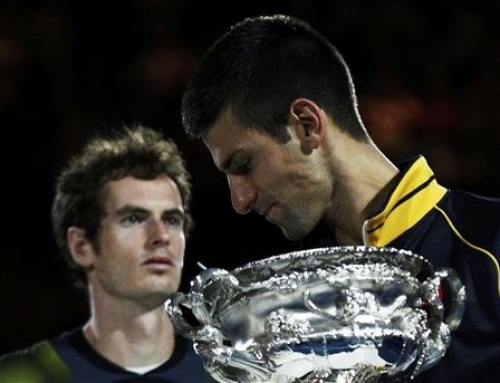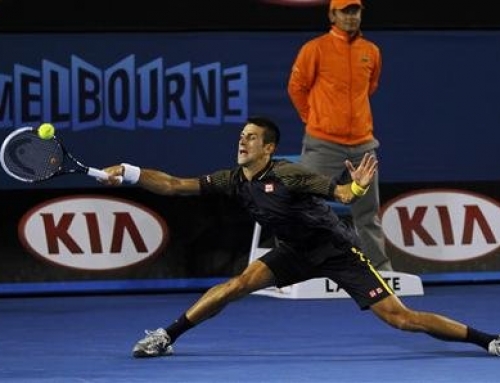 Last year, at this time, the Bryan brothers had reached the finals and faced a new team: Leander Paes and Radek Stepanek, but both were wily doubles veterans, esp. Paes. Men’s doubles (and women’s) is mostly like mating penguins in Antarctica. They’re faithful during the season they must mate, but the next season, it might be two other penguins. OK, maybe not the greatest analogy because doubles players will temporarily switch partners if one or the other might be hurt.
Last year, at this time, the Bryan brothers had reached the finals and faced a new team: Leander Paes and Radek Stepanek, but both were wily doubles veterans, esp. Paes. Men’s doubles (and women’s) is mostly like mating penguins in Antarctica. They’re faithful during the season they must mate, but the next season, it might be two other penguins. OK, maybe not the greatest analogy because doubles players will temporarily switch partners if one or the other might be hurt.
But, like clockwork, at the end of the year, doubles partners switch it up. Bhupathi and paired up with Bopanna to create a doubles team that could play for the Olympics last year, but Bhupathi now plays with Nestor and Bopanna has teamed up with Rajeev Ram. It can become difficult to track which duo are paired up.
Throughout it all, the Bryan brothers, with few exceptions, have played with each other over the years, and this constancy has not only helped the popularity, but makes them ideal as representatives for doubles.
Last year, that new doubles team had enough wily veteran guile that they beat the Bryan brothers. This year, Robin Haase and Igor Sijsling, both Dutch players and a relatively new group, came into the tournament unseeded and made it all the way to the finals. Haase is perhaps the better known of the two having had a reasonable, if not spectacular, singles career.
In any case, it was not much of a match as the experienced Bryan brothers won comfortably, 63 64, in an hour.
Boys junior title
During the Hopman Cup, John Isner dropped out because his knee was bothering him. It was significant enough that he dropped out of the Australian Open as well. Eager to have matches completed, the Aussies brought in Thanasi Kokkinakis. He subbed in for Isner, and then later on, subbed in for Tommy Haas in the mixed doubles match. The 16 year old had been trying to play up in the main tour, so much so, that his senior tour ranking was higher than his junior ranking, though both were at least triple digits. Even so, in his one singles match, he pushed Verdasco to a tiebreak.
Kokkinakis also played in the qualies of the main Aussie Open draw. Now, one of the almost amazing stories that occurred in the Australian Open was the near-upset of Nicolas Almagro in the first round by Steve Johnson. OK, this wasn’t exactly heading towards an upset, because Johnson lost 6-2 in the fifth, but no one expected him to push Almagro to 5 sets, and had he won, that near upset of Ferrer in the quarterfinals would not have happened.
Well, Steve Johnson nearly didn’t make it himself. He played Kokkinakis in the first round of qualies. The Australian (of Greek descent) won a tiebreak and then pushed Johnson to 17-15 in the third set before losing.
Sometimes when a player does well like that, it’s tough for them to come back to play the junior title, but Kokkinakis did his best, as an unseeded player, and made it all the way to the final.
Perhaps betraying his age, Kokkinakis seems like a young frat guy, cap pointed back, walking with attitude, much like, say, young Bernard Tomic. He came into the finals unseeded and faced fellow Australian (of Greek descent) in Nick Kyrgios, the third seed. These aren’t the first two Australians of Greek descent to see success. Consider Mark Philippoussis from a decade ago. Apparently, Greeks like to move to Australia (as well as former Yugoslavs–consider Bernard Tomic).
While watching the junior final may seem like a glimpse to the future, the junior game is often so far removed from what happens in the main tour, that it’s ultimately disappointing. Watch a good pro match and the guys move smoothly, don’t make horrible decisions, and actually have long rallies. This match hardly had any rallies longer than 10 shots. Either a person made a winner or an error, but it was usually within 10 shots.
Usually, the juniors have some power, whether it be in their serve or their groundies. For Kyrgios, announcers pointed out his serve speed. His backhand looked good too, but of course, everyone has a tough forehand. For Kokkinakis, his forehand his big, and he can change directions of the ball well. Neither had spectacular returns nor amazing retrieving abilities.
The match eventually went to Kyrgios, 76 63. Australia, much like Britain, is hoping its current crop of juniors will replenish a somewhat bare cupboard. With Kyrgios and Kokkinakis, they also have Luke Saville, the highest ranked 18 year old in the world (admittedly, at almost 400 in the world). Their games are still pretty raw, but there’s something to aspire to.






![[Aussie Open Final] Can Andy Murray beat Novak Djokovic?](https://www.essentialtennis.com/wp-content/uploads/2013/01/20130126andy-500x383.jpg)
![[Day 12, Aussie Open, SF] Murray finally beats Federer in a Slam, winning in 5 sets](https://www.essentialtennis.com/wp-content/uploads/2013/01/20130125andy-500x383.jpg)